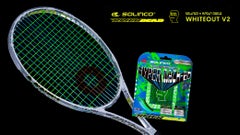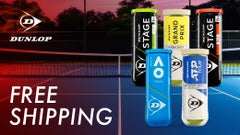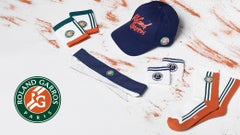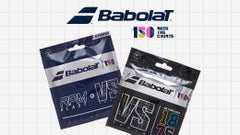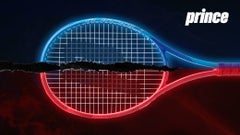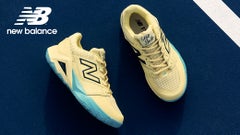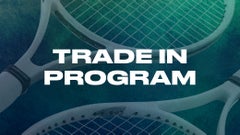Outsoles explained: hard vs. clay vs. grass
We get asked all the time if a hard court shoe will be suitable on a clay court or even a grass court. While you can get away with it, there is a reason why there are specific shoes for specific surfaces. Each surface plays a little different and your game and footwork can change depending on what surface you are playing on. So let's take a look at what the distinctions are between these three types of shoes.
Hard Court Outsoles The most popular and common tennis court surface is a hard court. This court is also the most demanding when it comes to outsole durability. Depending on where you play, you may encounter a gritty, slower hard court or possibly a slick, more slippery, quick court. Either way, the soles of hard court shoes are usually built to handle the demands of this surface. Most often they feature a modified herringbone pattern to give you the perfect blend of grip and give on the court. Hard court shoes will often feature ample cushioning and a midsole that will help transfer energy into every step you take as well as absorb shock from the harder surface. They usually feature a tough upper that will aid in support and durability. The toe area is often built up and protected for the toe draggers out there, as a gritty hard court can really do some damage to your shoes. When choosing a hard court shoe, there are usually two types you can choose from – the first being a durable, stable option that comes with a 6-month outsole warranty. Meaning, if you can wear out that outsole in under 6-months, the manufacturer will send you another pair. The second option is a speed-oriented shoe. These are often lighter in weight and they have been made to have a faster feel. The outsole usually has a little less grab but more give and they have a tendency to wear out faster. Hard court shoes are the most versatile shoes and can be used on clay or grass courts.
Clay Court Outsoles Clay courts are typically the slowest of the three surfaces and while you may not be able to master the movement right away, finding the right shoe should be simple! You will want a shoe with the right levels of traction to help you move gracefully on the court as well as lateral support to keep you supported when sliding into shots. What mainly sets all these shoes apart is the outsole. The outsole of a clay court shoe will typically feature a full herringbone (zig zags) tread pattern, which offers great grip on this slippery surface. This pattern won't allow the clay to lodge to the outsole so you can get a better traction when you try to start, stop or change directions, if the clay does build up, a couple taps to the side of your shoe from your racquet should knock loose all the clay from the outsole. The herringbone design also makes sliding from side to side more predictable so you can perfectly glide into a shot and recover, but will also provide the traction needed for moving forward and backward. Another reason you will want to pick up a pair of clay court specific shoes if you plan on playing on clay on a regular basis, is because they usually have a tighter knit upper to not only aid in stability but help keep the clay from entering your shoe. These shoes won’t come with an outsole guarantee as the clay is usually much gentler on your outsole, however, sometimes the shoe will offer added durability on high wear areas where your feet might drag.
Grass Court Outsoles There comes a time of the year when the French Open is over and there are just a few weeks until Wimbledon…it's grass court season! Despite the grass court tournaments only lasting a few weeks on the pro tour, some players are fortunate to enjoy grass tennis all year long. Like clay, grass is much softer on your body and joints. While there are not a ton of grass court shoe options to choose from, this surface tends to play fast, which means you will definitely want the correct shoe on the court. Grass court shoes have an outsole which feature “nubs” or “pimples” that are reminiscent of a cleat-like-shoe. This outsole provides great grip for players on what can often be slippery grass. Despite the bumpy outsole, it shouldn’t do any damage to the court but will help players feel comfortable moving quickly on this fast surface. Unlike hard court shoes, these cannot be used on other surfaces.
Hope that clears up any questions on what sets each type of shoe apart!
